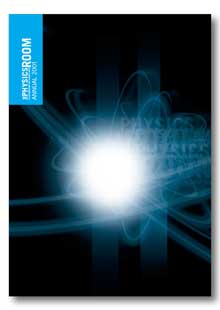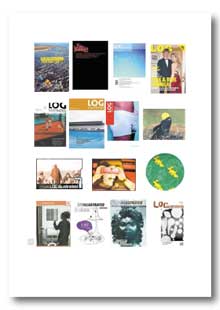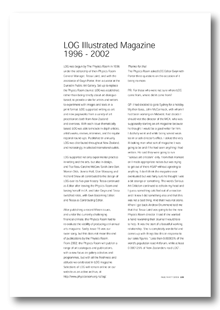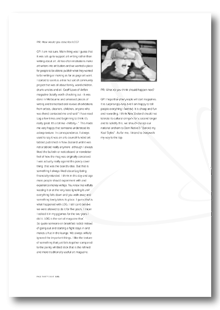 |
|||||||||
|
|
| ...Publications: Annual | ...LOG Illustrated Magazine 1996 - 2002 | ||||||||||||
|
LOG was begun by The Physics Room in 1996 under the editorship of then Physics Room General Manager, Tessa Laird, and with the assistance of Gwyn Porter, then a curator at the Dunedin Public Art Gallery. Set up to replace the Physics Room Journal, LOG was established, rather than being strictly about-art dialogue-based, to provide a site for artists and writers to experiment with images and texts in a print format. LOG supported writing-as-art and new pageworks from a variety of art practitioners both from New Zealand and overseas. With each issue thematically based, LOG was able to include in-depth articles, artist’s works, reviews, interviews, and the regular regional round-ups. Published tri-annually, LOG was distributed throughout New Zealand, and increasingly, in selected international outlets. LOG supported not only experimental practice in writing and the arts, but also in design, and Tiso Ross, Caroline McCaw, Sarah Jane Barr, Warren Olds, Jennie Hall, Glen Mossong and Richard Shaw all contributed to the design of LOG over its five-year history. Tessa continued as Editor after leaving the Physics Room and basing herself in LA, and later Gwyn and Tessa switched roles, with Gwn becoming Editor, and Tessa as Contributing Editor. After publishing a record fifteen issues, and under the currently challenging financial climate, the Physics Room had to re-evaluate the viability of producing a tri-annual arts magazine. Sadly, issue 15 was our swan song, but this does not mean the end of publications by the Physics Room. From 2002, the Physics Room will publish a range of art catalogues and publications, with a new focus on gallery activities and programmes, but with all the freshness and attitude we celebrated in LOG magazine. Selections of LOG will remain online on our website as an active archive, at www.physicsroom.org.nz/log/ Thanks for that The Physics Room asked LOG Editor Gwynneth Porter three questions on the occasion of it being no more.
GP: I had decided to go to Sydney for a holiday. My then boss, John McCormack, with whom I had been working on Midwest, had decide I should visit the director of the MCA, who was supposedly starting an art magazine because he thought I would be a good writer for him. I dutifully went and while being served weak tea in a lush director’s office, I asked the very ill-looking man what sort of magazine it was going to be and if he had seen anything I had written. He said they were going to run "serious art criticism" only. From that moment on I made appropriate noises but was trying to get out of there ASAP without agreeing to anything. I don’t think the magazine ever eventuated but was fairly sure he thought I was a bit strange or something. The words Serious Art Criticism continued to echo in my head and I guess something calcified out of a reaction and I knew I did something else and that this was not a bad thing. And that I was not alone. When I got back Andrew Drummond told me that that Tessa Laird was going to be the new Physics Room director. I said if she wanted a hand reworking their Journal I would love to help. It was the start of a beautiful working relationship. She is completely wonderful and comes up with things like this in response to our sales figures: "Less than 0.00005% of the world’s population read Artforum, while at least 0.000125% of New Zealanders read LOG". PR: How would you describe LOG? GP: I am not sure. Main thing was I guess that it was set up to support art writing rather than writing about art. All too often institutions make art writers into art butlers and we wanted a place for people to be able to publish what they wanted to be writing or making as far as page art went. I started to see it as a tree hut sort of community project that was all about family, weird children, drunk uncles and all. Geoff Lowe of Artfan magazine (totally worth checking out - it was done in Melbourne and amassed pieces of writing and transcribed oral reviews of exhibitions from artists, cleaners, children, anyone who was there) contacted me and said "I have read Log a few times and beginning to think it’s really great. It’s a bit like <hillbilly>." This made me very happy that someone understood its asleep texture. In correspondence, I always used to say it was an arts council-funded art tabloid published in New Zealand until it was not a tabloid really anymore although I always liked the bulletin or noticeboard or newsletter feel of how the mag was originally conceived. I was actually really against the poncy cover thing that was the board’s idea. But that is something I always liked about Log being financially retarded. I think in this day and age more people should experiment with and experience money vertigo. You know like wilfully wasting it or at the very least ignoring it until everything falls down and you walk away and something lovely takes its place. I guess that is what happened with LOG. I still can’t believe we were allowed to do it for five years. I mean I edited it in my pyjamas for the two years I did it. LOG is the sort of magazine that (to quote someone on breakfast radio) instead of going out and starting a fight stays in and makes a hut in the lounge. We always wilfully ignored the important things. I like the texture of something that just falls together compared to the pointy whittled stick that is the refined and more traditionally useful art magazine. PR: What do you think should happen next? GP: I hope that other people will start magazines. It is surprisingly easy and I am happy to tell people everything I learned. It is cheap and fun and rewarding. I think New Zealand should not tolerate its cultural cringers for a second longer and to solidify this, we should change our national anthem to Dam Native’s "Behold my Kool Styles". As for me, I intend to sleepwalk my way to the top. View LOG Editor Gwynneth Porter interview as a PDF This interview originally appeared in The Physics Room Annual
2001 Order your copy today from The
Physics Room ! View LOG Illustrated archives online
|
||||||||||||



